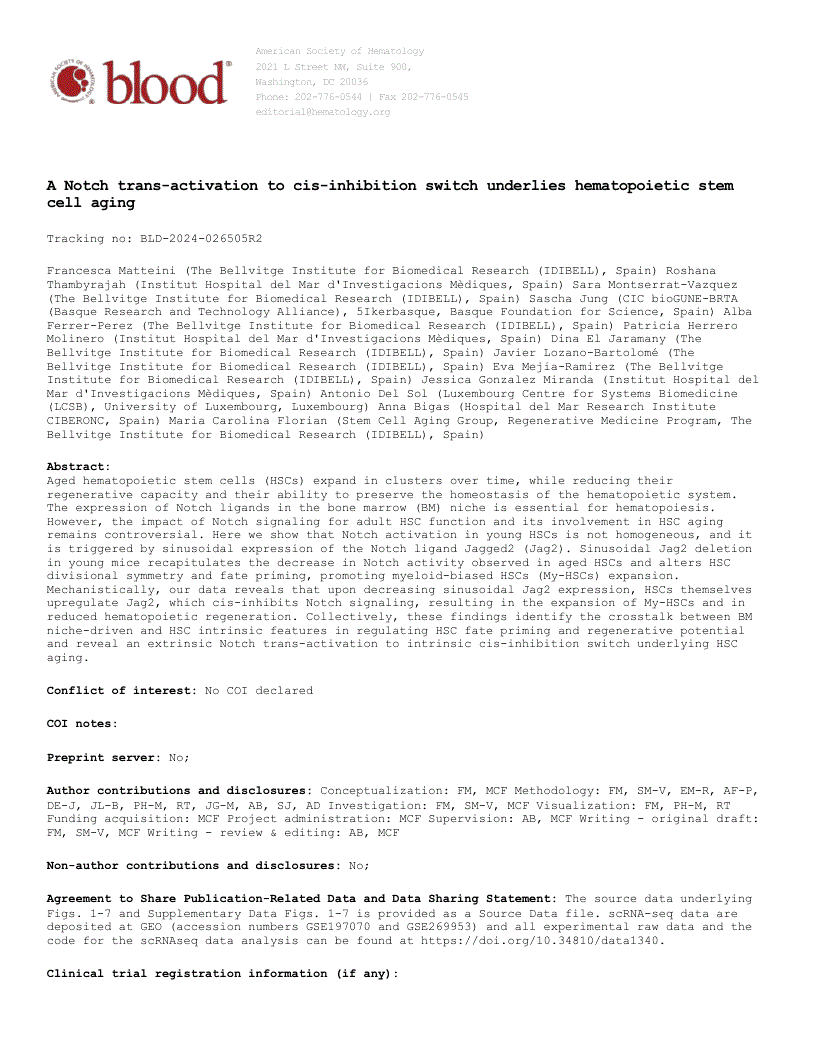Key Points
Notch activity decrease in HSCs induces myeloid-biased stem cell expansion and clustering at the expenses of hematopoietic regeneration
Deletion of sinusoidal Jag2 decreases Notch activity in HSCs, increasing symmetric divisions and impairing daughter fate commitment
Aged hematopoietic stem cells (HSCs) expand in clusters over time, while reducing their regenerative capacity and their ability to preserve the homeostasis of the hematopoietic system. The expression of Notch ligands in the bone marrow (BM) niche is essential for hematopoiesis. However, the impact of Notch signaling for adult HSC function and its involvement in HSC aging remains controversial. Here we show that Notch activation in young HSCs is not homogeneous, and it is triggered by sinusoidal expression of the Notch ligand Jagged2 (Jag2). Sinusoidal Jag2 deletion in young mice recapitulates the decrease in Notch activity observed in aged HSCs and alters HSC divisional symmetry and fate priming, promoting myeloid-biased HSCs (My-HSCs) expansion. Mechanistically, our data reveals that upon decreasing sinusoidal Jag2 expression, HSCs themselves upregulate Jag2, which cis-inhibits Notch signaling, resulting in the expansion of My-HSCs and in reduced hematopoietic regeneration. Collectively, these findings identify the crosstalk between BM niche-driven and HSC intrinsic features in regulating HSC fate priming and regenerative potential and reveal an extrinsic Notch trans-activation to intrinsic cis-inhibition switch underlying HSC aging.


This feature is available to Subscribers Only
Sign In or Create an Account Close Modal